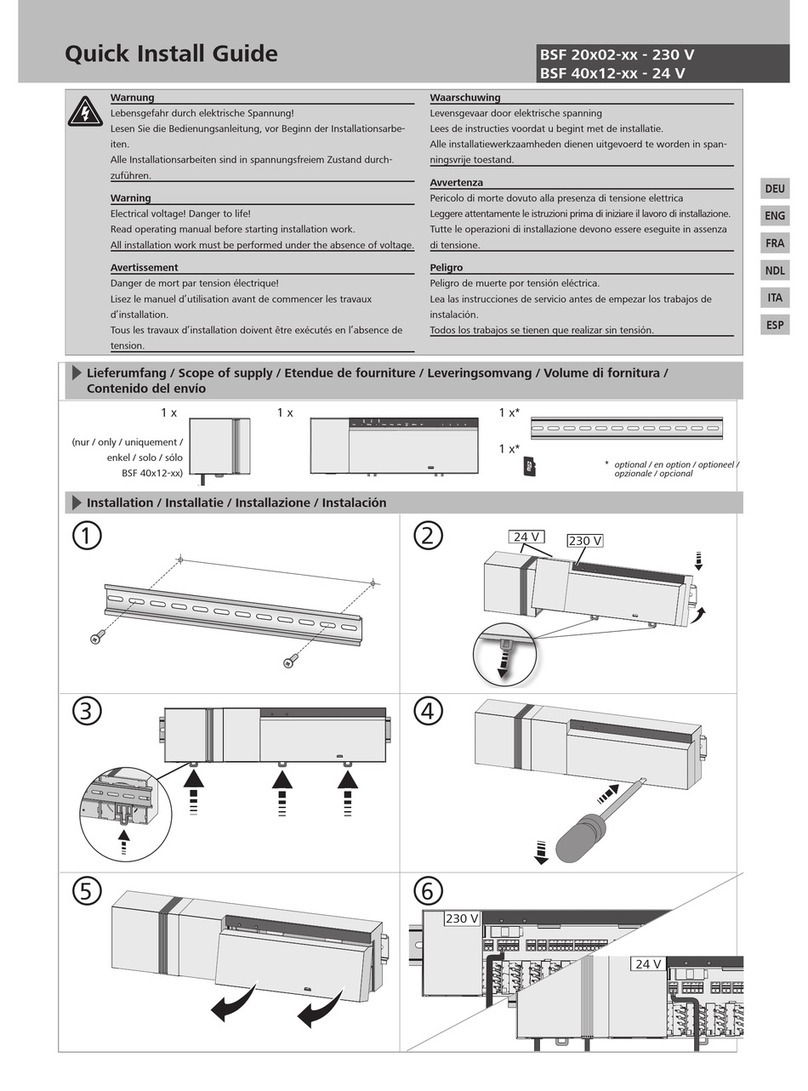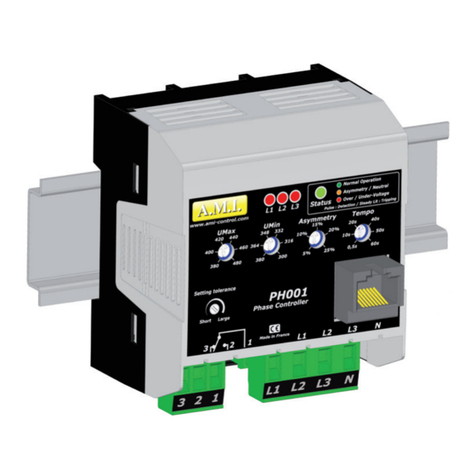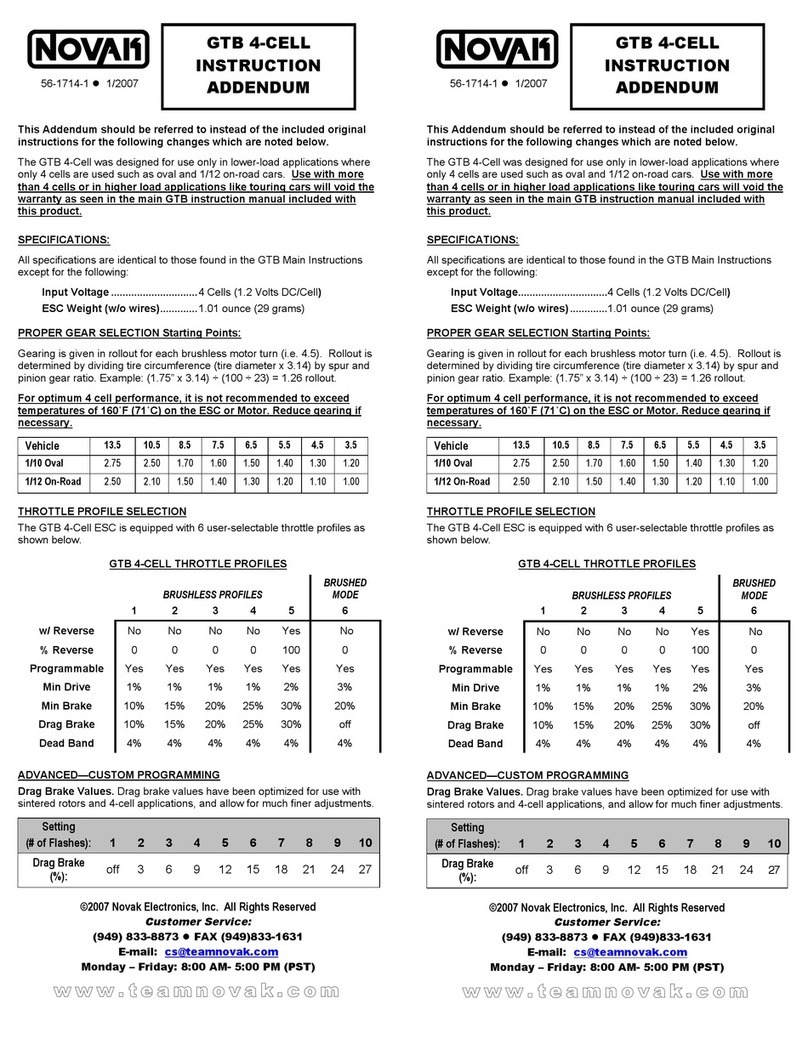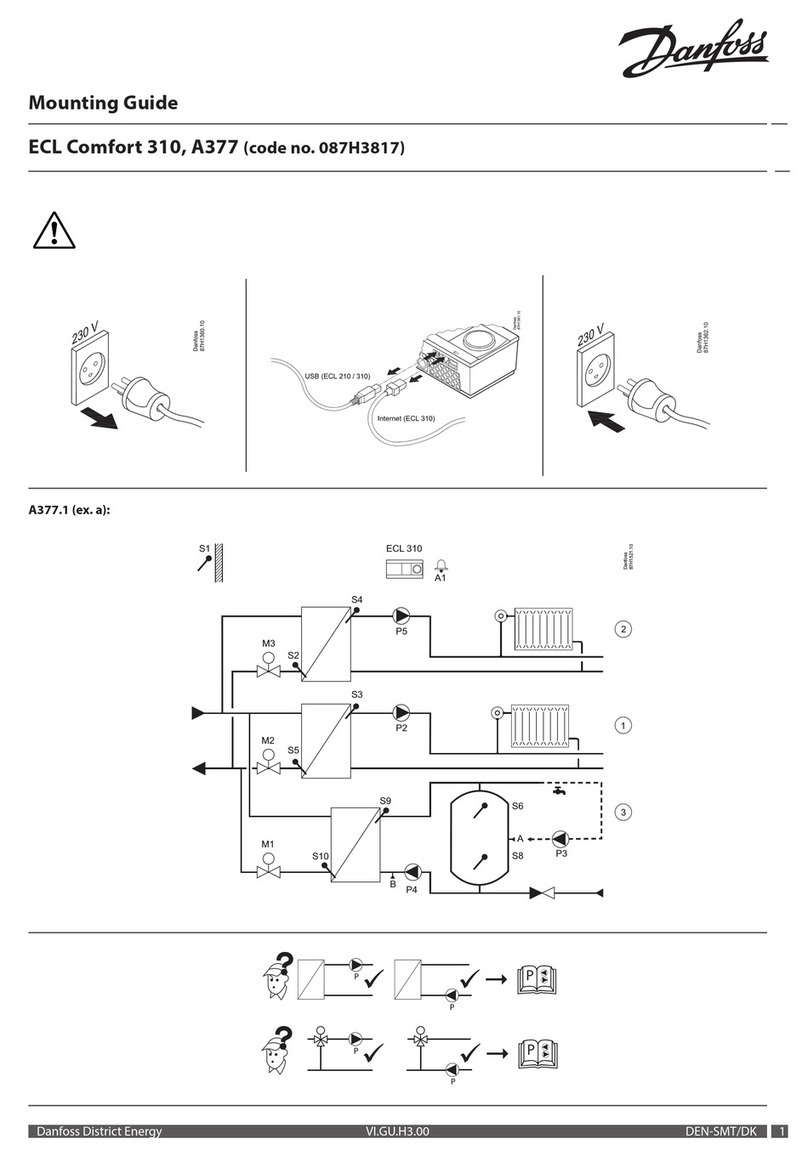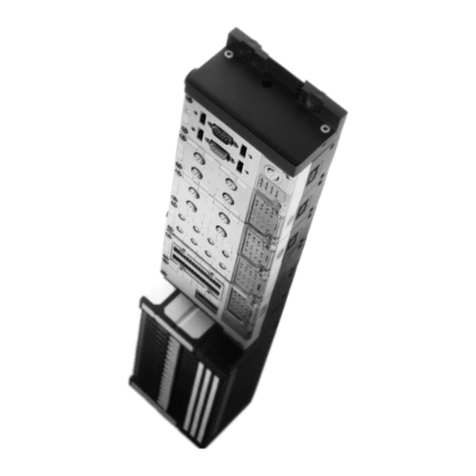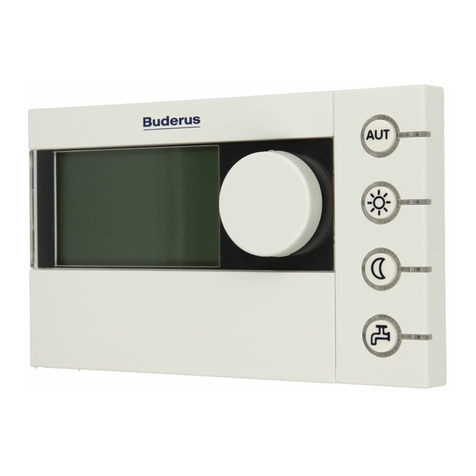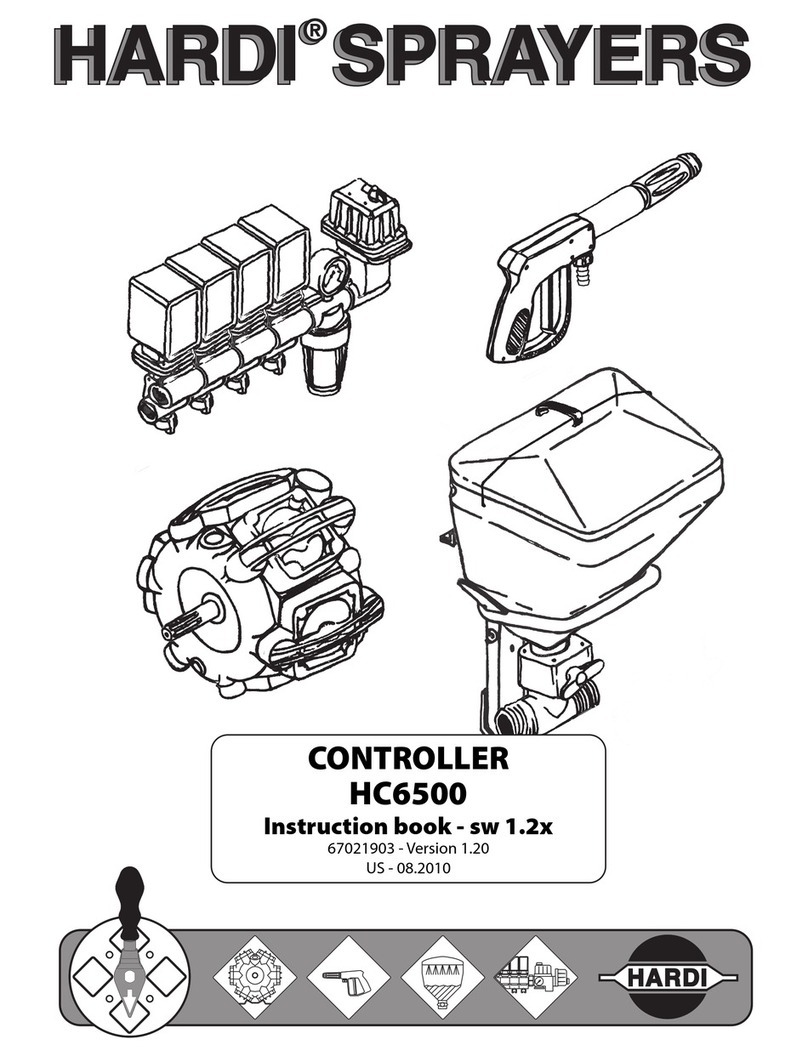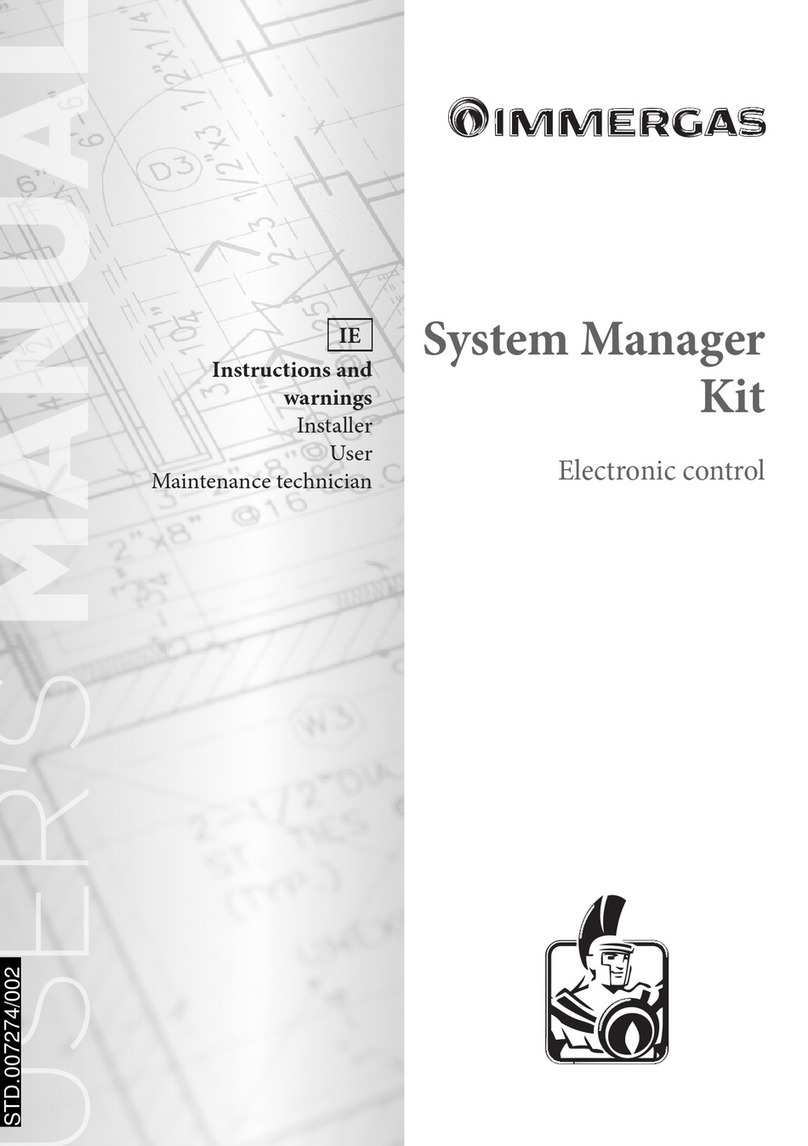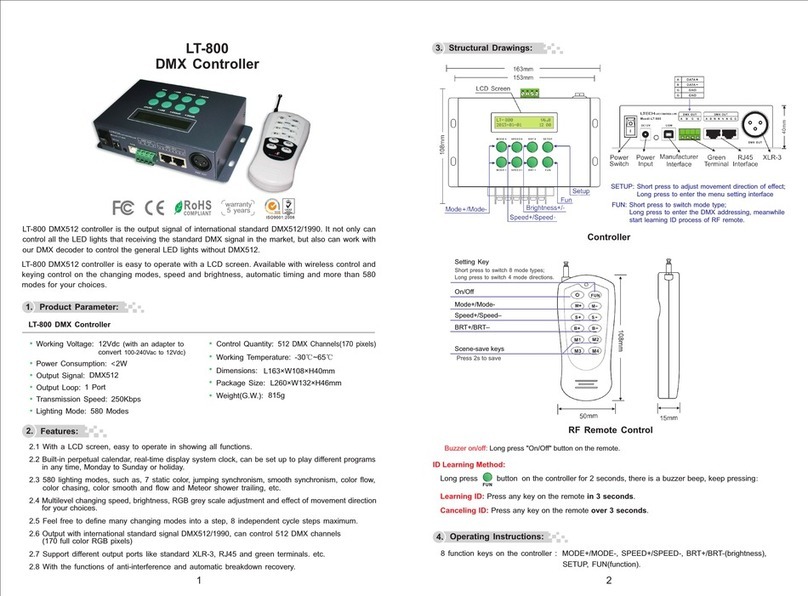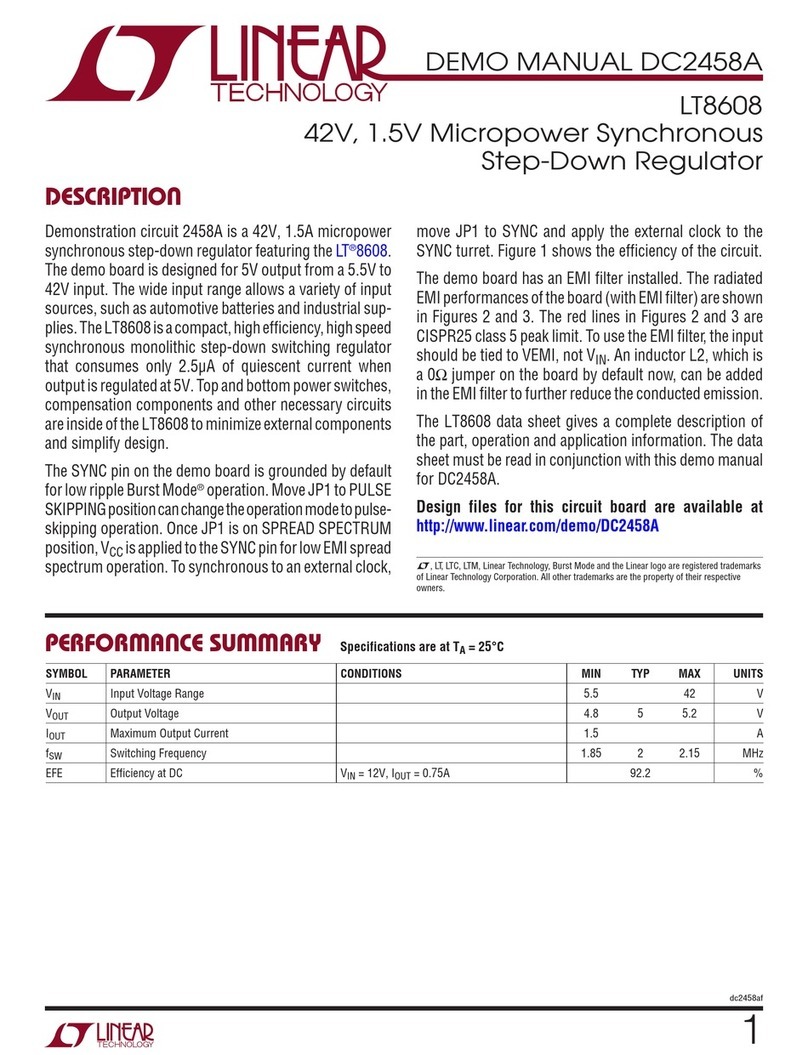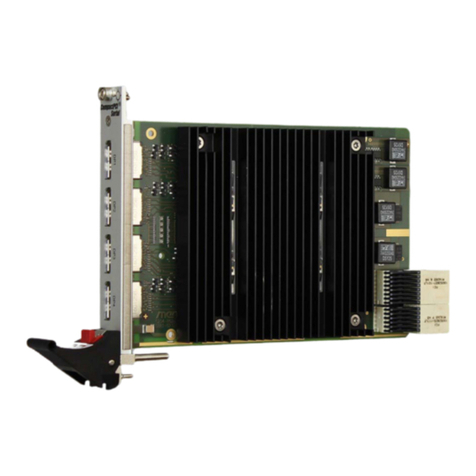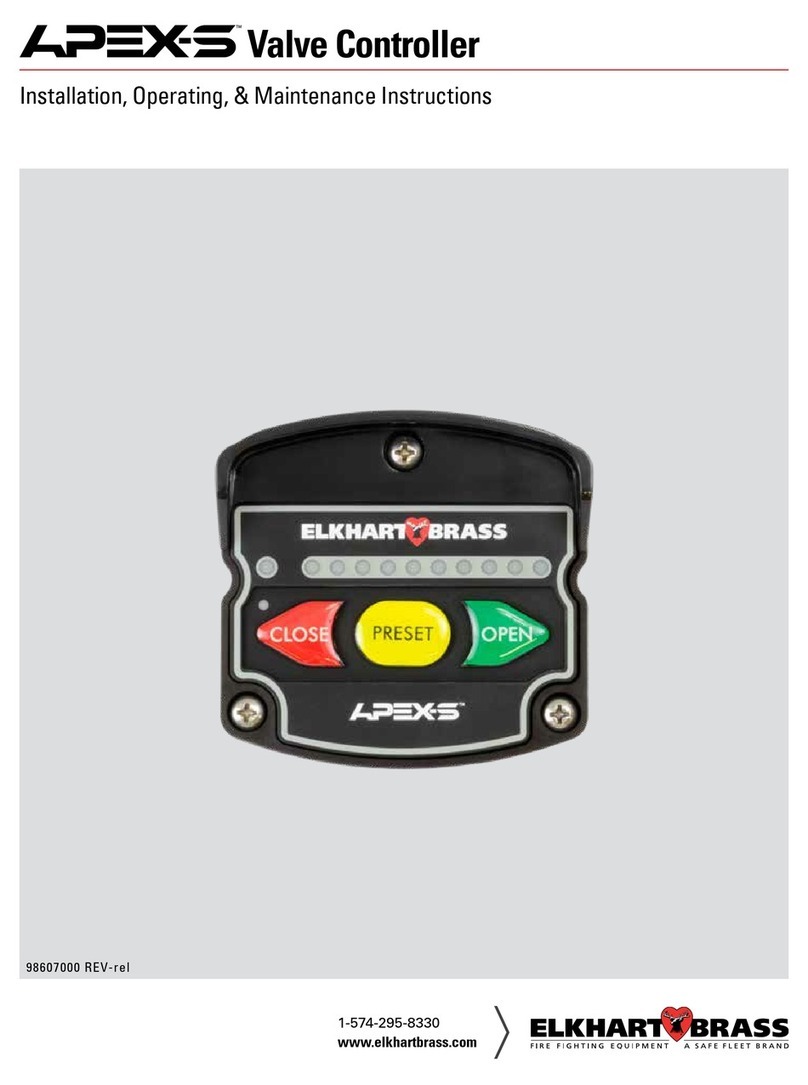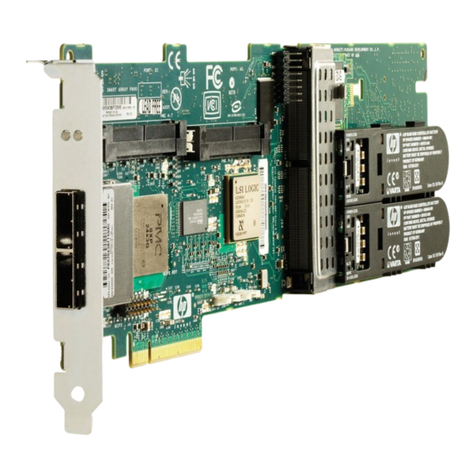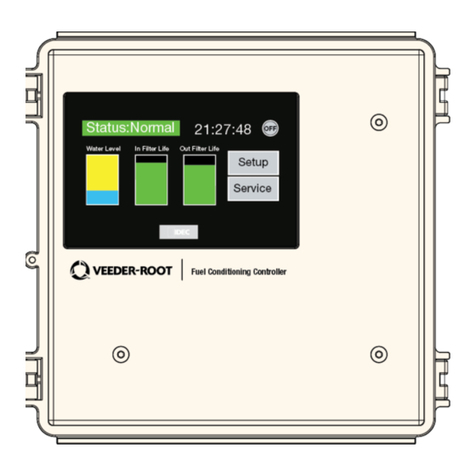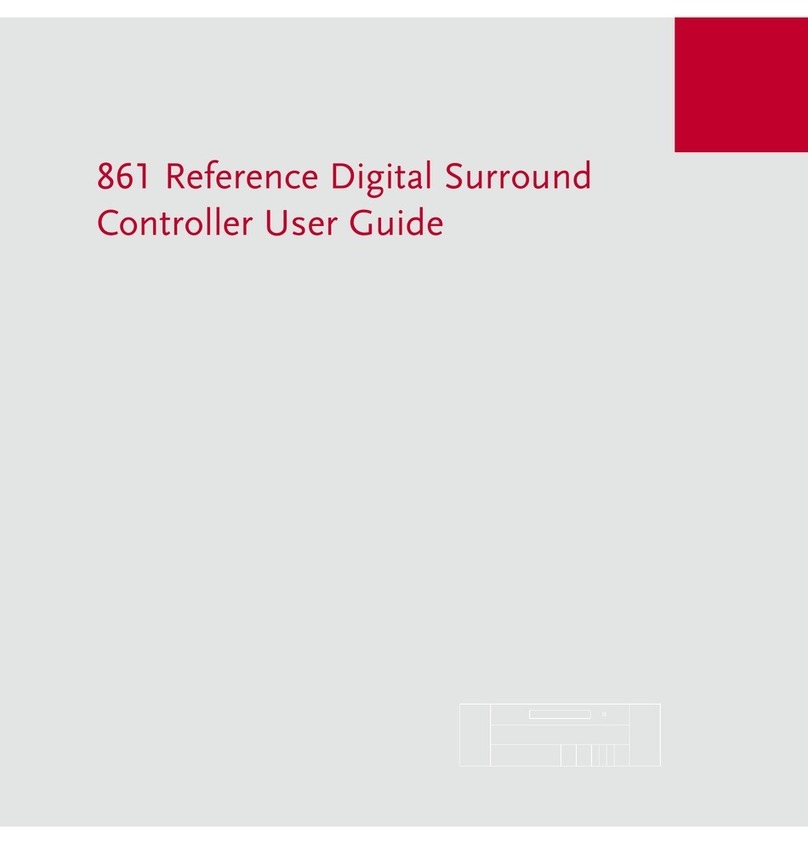Thevco VLC-3 User manual

VLC-3
Light Program Controller
USER'S MANUAL
6
7
,
5
)81&7,216
352*5$0
6(77,1*6
'
8
6
.
7
2
'
$
:
1
3
(
$
.
6
&
8
5
5
(
1
7
3
(
5
,
2
'
+50,1
+50,1
0,16(&
M 890-00189 rev. 04 K 895-00406 rev. 00

2VLC-3 rev.04
VLC-3
GENERAL................................................................ 3
1. INTRODUCTION.....................................................................3
2. PRECAUTIONS ......................................................................4
3. MOUNTING INSTRUCTIONS .....................................................4
4. CONNECTIONS......................................................................5
5. LOCATION OF THE CONTROLS.................................................6
6. OVERVIEW ...........................................................................7
USING AND PROGRAMMING..................................... 9
7. QUICK START-UP ...................................................................9
8. DESCRIPTION OF COMMUN PARAMETERS ..............................16
8.1 Light Intensity ..............................................................16
8.2 Clock..........................................................................16
8.3 Day Counter ................................................................16
8.4 Minimum Light Intensity .................................................17
8.5 Sunrise .......................................................................17
8.6 Sunset ........................................................................18
8.7 Auxiliary Light Output....................................................18
8.8 Period Mode ................................................................20
9. OVERVIEW OF PROGRAMMING SEQUENCES ........................... 21
9.1 Setting the No Period Mode ...........................................22
9.1.1 Dusk-to-Dawn Programs..........................................22
9.1.2 Light Peaks...........................................................23
9.2 Setting the Period Mode.................................................25
9.2.1 Dusk-to-Dawn Programs..........................................26
9.2.2 Light Peak .............................................................28
10. DISPLAYING A PROGRAM UNIT ..........................................29
11. DELETE A PROGRAM UNIT ..................................................30
12. REPARTITIONING THE PERIODS ...........................................31
13. MANUAL MODE ................................................................34
14. ALARM CONDITIONS .........................................................34
15. BACKUP BATTERY..............................................................34
16. TECHNICAL SPECIFICATIONS..............................................35
17. TROUBLESHOOTING ..........................................................36

3
VLC-3.rev.04
GENERAL
1. INTRODUCTION
The VLC-3 is a light program controller designed for livestock buildings.
Light intensities vary according to a light program sequence. Up to 12
dusk-to-dawn programs and 20 light peaks can be programmed per
period with up to 20 different periods in one year. The controller
includes a four-digit display, function pilot lights, two adjustment knobs
and a push-button for easy programming. Additional features include:
- gradual increasing and decreasing of light intensity to simulate
sunrises and sunsets
- minimum and maximum intensities specified as a percentage of full
lamp intensity
- display of current time, day, light intensity and period
- step-by-step programming
- minimum inertia method used to smooth sudden transitions in light
intensity
- manual mode
- a lamp output activated above or below a threshold value
- an alarm output
- a real-time clock with backup battery for keeping time in case of a
power failure
- overload protection on the output
- a 115/230 VAC - 50/60Hz power supply
- the unit can be connected to a computer communications module

4VLC-3 rev.04
VLC-3
2. PRECAUTIONS
Although fuses at the input and outputs of the controller
protect its circuits in case of an overload or overvoltage,
we recommend installing an additional protection device
on the controller's supply circuit.
The room temperature where the controller is located
MUST ALWAYS REMAIN BETWEEN 32°F AND 104°F
(0°C TO 40°C).
To avoid exposing the controller to harmful gases or
excessive humidity, it is preferable to install it in a
corridor.
DO NOT SPRAY WATER ON THE CONTROLLER
3. MOUNTING INSTRUCTIONS
Open the latch on the right and lift the cover. Mount the enclosure on
the wall using four screws. Be sure the electrical knockouts are at the
bottom of the enclosure in order to prevent water from entering the
controller. Insert the screws in the mounting holes provided and tighten.
Fasten the black caps provided with the controller onto the mounting
holes.

5
VLC-3 rev.04
VLC-3
ALLWIRING MUSTBE DONEBY ANAUTHORIZED ELEC-
TRICIAN AND MUST COMPLY WITH APPLICABLE
CODES,LAWSANDREGULATIONS. BESURE POWERIS
OFF BEFORE DOING ANY WIRING TO AVOID ELECTRI-
CAL SHOCKS AND EQUIPMENT DAMAGE.
4. CONNECTIONS
To connect the controller, refer to the wiring diagram enclosed with this
user's manual.
Set the voltage switch to the appropriate voltage.
Use the electrical knockouts provided at the bottom of the enclo-
sure. Do not make additional holes in the enclosure, particularly on
the top of the enclosure when using a computer communications
module.
Two types of alarms are currently available on the market. The first
type is activated when current is cut off at the source; the other is
activated when current is supplied to the input. Use the NC terminal
for an alarm of the first type; otherwise use the NO terminal.
!
WARNING
Voltage Selector
1
1

6VLC-3 rev.04
VLC-3
5. LOCATION OF THE CONTROLS
The pilot lights on the left indicate which function is currently active on
the digital display. When the function has a corresponding value associ-
ated to it (for example, Start Time), the value appears on the display.
The function selector changes the current function. The adjustment
knob is used to adjust the currently displayed parameter value. The Day,
PM and % pilot lights to the right of the display indicate the unit of the
value currently displayed. If no user activity is recorded after one
minute while inside a function other than CLOCK or MANUAL MODE,
the display returns to the clock time.
Internal Switches: located inside the front cover.
)81&7,216 6(77,1*6
&
8
5
5
(
1
7
3
(
5
,
2
'
352*5$0
'
8
6
.
7
2
'
$
:
1
3
(
$
.
6
+50,1
+50,1
0,16(&
/
'
3
'
2
$
)
#FFONO
1DEKCOLNU SRETEMARAP SRETEMARAPDEKCOL
2H21EDOMKCOLCH42EDOMKCOLC
3TNECSEDNACNI EVRUC EVRUCTNECSEROULF
4V01-0V01-1
5FFO/NOLAUNAM EDOM EVISSERGORPLAUNAM EDOM
6DEMROFREPTESNUS EMITPOTSEHTRETFA DEMROFREPTESNUS EMITPOTSEHTEROFEB
21-7DEVRESER

7
VLC-3 rev.04
VLC-3
When switch #1 is ON, the timer parameters are locked and can only be
displayed (except the clock time). When switch #2 is ON, the display
shows 24-hour time. Otherwise, the display shows 12 hour time (AM /
PM). Use switch #3 to select a curve (ON = fluorescent curve, OFF =
incandescent curve). The switch #4 determines the output operation
mode (ON = 1-10V, OFF = 0-10V). The switch #5 determines the
progression of lights intensity on manual mode. The switch #6 deter-
mines whether the sunset is performed before or after the Stop Time
(ON= before the stop time, OFF = after the stop time).
6. OVERVIEW
Notes:
(i) The minimum programmed intensity, sunrise duration and sunset
duration are common to all light programs.
(ii) Peaks are programmed separately for each period using a start time
and a duration and assume that the current intensity is at its maximum
programmed intensity. If this is not the case, the peak is not executed.
LIGHT
INTENSITY
TIME
100%
Maximum
Programmed
Intensity
Minimum
Programmed
Intensity
Dusk-to-Dawn
Start Time
Peak #1
Duration Peak #2
Duration Sunset
Duration
Peak #1
Start time Peak #2
Start time
Sunrise
Duration
Dusk-to-Dawn
Stop Time
(If dipswitch
#6 = OFF)
Dusk-to-Dawn
Stop Time
(If dipswitch
#6 = ON)

8VLC-3 rev.04
VLC-3
(iii) Light intensity between programs never drops below the minimum
programmed intensity.
(iv) The slope of the transition curve is exponential rather than linear so
that the perceived transition in light intensity is equally distributed over
the duration.

9
VLC-3.rev.04
USING AND PROGRAMMING
7. QUICK START-UP
Follow these basic steps for activating the controller. If necessary,
consult the indicated reference for each step to get detailed informa-
tions.
ADJUSTING COMMON PARAMETERS
1. Connect the control according to the wiring diagram enclosed with
this manual.
2. Turn the power ON.
3. Adjust the clock (see sec. 8.2).
4. Adjust the day counter. This counter is used to activate the light
programs (see sec. 8.3).
5. Adjust the minimum light intensity. This is the lowest level of lighting
used when no programs are currently active (see sec. 8.4).
6. Adjust the sunrise duration. This is the duration of the transition from
minimum to maximum light intensity in a light program (see sec. 8.5).
7. Adjust the sunset duration. This is the duration of the transition from
maximum to minimum light intensity in a program (see sec. 8.6).
8. Adjust the percentage used for activating the auxiliary output. (see.
sec 8.7).
9. Adjust the percentage used for deactivating the auxiliary output (see
sec. 8.8).
10. Set the period menu to On or Off depending if you are planing to use
periods or not. The controller uses periods to automatically change
the lighting programs based on the animal age (see sec. 8.8).

10 VLC-3 rev.04
VLC-3
STEP BY STEP PROGRAMMING :
Once step 1 to 10 are done, the user must enter the programming mode
to adjust the periods, dusk-to-dawn and peak parameters. The first
example shows the key sequence for programming 2 dusk-to-dawn
programs without periods. The second example illustrates the key
sequence for programming 2 periods with 2 dusk-to-dawn programs.
EXAMPLE 1 : Two dusk-to-dawn programs without periods.
Dusk-to-Dawn Program 1:
start time: 6:30am
stop time: 10:30am
maximum light intensity: 80%
NB. The numbers shown in bold characters flash on the display.
PETSNOITCAYALPSIDsDELGNINAEM
1otrotcelesnruT MARGORP OTPETSHSUP GORPRTNE margorPgniretnE edoM
2nottub-hsupsserP.dd 1nwaD-ot-ksuD 1margorP
3nottub-hsupsserP ffO nwaD-ot-ksuD etatS1margorP
4NOottsujdA nO txenhtiweunitnoC margorp
5nottub-hsupsserP 21 00: tratSmargorP )nim;sruoh(emiT
6sruohtsujdA 600:
7nottub-hsupsserP:600
8setunimtsujdA:603
9nottub-hsupsserP 21 00: potSmargorP )nim;sruoh(emiT
01sruohtsujdA 01 00:
Dusk-to-Dawn Program 2:
start time: 12:45pm
stop time: 3:10pm
maximum light intensity: 75%

11
VLC-3 rev.04
VLC-3
PETSNOITCAYALPSIDsDELGNINAEM
11nottub-hsupsserP:01 00
21setunimtsujdA:01 03
31nottub-hsupsserP 0%rofytisnetnixaM 1margorP
41ytisnetnithgilmumixamtsujdA 08 %
51nottub-hsupsserP.dd 2margorPnwaD-ot-ksuD
2
61nottub-hsupsserP ffO margorPnwaD-ot-ksuD etatS2
71NOottsujdA nO txenhtiweunitnoC margorp
81nottub-hsupsserP 21 00: emiTtratSmargorP )nim;sruoh(
91sruohtsujdA 21 00:mp
02nottub-hsupsserP:21 00 mp
12setunimtsujdA:21 54 mp
22nottub-hsupsserP 21 00:mpemiTpotSmargorP )nim;sruoh(
32sruohtsujdA 300:mp
42nottub-hsupsserP:300 mp
52setunimtsujdA:301 mp
62nottub-hsupsserP 0%rofytisnetnixaM 2margorP
72ytisnetnithgilmumixamtsujdA 57 %
82nottub-hsupsserP.dd 3margorPnwaD-ot-ksuD
3
92nottub-hsupsserP FFO
03ffOotetatsmargorptsujdA FFO nwaD-ot-ksuDfodnE smargorP
131.EPotmargorptsujdA.EP 11margorPkaePthgiL
23nottub-hsupsserP nO 1margorPkaePthgiL etatS
33ffOot1.EPmargorptsujdA ffO kaePthgiLfodnE smargorP
43nottub-hsupsserP OTPETSHSUP GORPRTNE
53noitcnufrehtonaotrotcelesehtnruT

12 VLC-3 rev.04
VLC-3
EXAMPLE 2: Two periods with 2 Dusk-to-Dawn programs
PERIOD 1
Dusk-to-Dawn 1
start time: 6:30am
stop time: 10:30am
maximum light intensity: 80%
Dusk-to-Dawn 2
start time: 12:45pm
stop time: 3:10pm
maximum light intensity: 75%
PERIOD 2
Dusk-to-Dawn 1
start time: 6:00am
stop time: 11:30am
maximum light intensity: 85%
Dusk-to-Dawn 2
start time: 1:45pm
stop time: 4:30pm
maximum light intensity: 80%
NB. The numbers shown in bold characters flash on the display.
PETSNOITCAYALPSIDsDELGNINAEM
1otrotcelesnruT MARGORP OTPETSHSUP GORPRTNE edoMmargorPgniretnE
2nottub-hsupsserP1yad 1yad(1doirePfoyadtsriF )tluafedyb
3nottub-hsupsserP 563 yad1doirePfoyadtsaL
4doirePfoyadtsaltsujdA
104 yad
5nottub-hsupsserP.dd 11margorPnwaD-ot-ksuD
6nottub-hsupsserP ffO 1margorPnwaD-ot-ksuD etatS
7NOottsujdA nO margorptxenhtiweunitnoC
8nottub-hsupsserP 21 00: ;sruoh(emiTtratSmargorP )nim
9sruohtsujdA 600:
01nottub-hsupsserP:600

13
VLC-3 rev.04
VLC-3
PETSNOITCAYALPSIDsDELGNINAEM
11setunimtsujdA:603
21nottub-hsupsserP 21 00: emiTpotSmargorP )nim;sruoh(
31sruohtsujdA 01 00:
41nottub-hsupsserP:01 00
51setunimtsujdA:01 03
61nottub-hsupsserP 0%margorProfytisnetnixaM
1
71ytisnetnithgilmumixamtsujdA 08 %
81nottub-hsupsserP.dd 22margorPnwaD-ot-ksuD
91nottub-hsupsserP ffO 2margorPnwaD-ot-ksuD etatS
02NOottsujdA nO txenhtiweunitnoC margorp
12nottub-hsupsserP 21 00: emiTtratSmargorP )nim;sruoh(
22sruohtsujdA 21 00:mp
32nottub-hsupsserP:21 00 mp
42setunimtsujdA:21 54 mp
52nottub-hsupsserP 21 00:mpemiTpotSmargorP )nim;sruoh(
62sruohtsujdA 300:mp
72nottub-hsupsserP:300 mp
82setunimtsujdA:301 mp
92nottub-hsupsserP 0%margorProfytisnetnixaM
2
03ytisnetnithgilmumixamtsujdA 57 %
13nottub-hsupsserP.dd 33margorPnwaD-ot-ksuD
23nottub-hsupsserP FFO
33ffOotetatsmargorptsujdA FFO nwaD-ot-ksuDfodnE smargorP
431.EPotmargorptsujdA.EP 11margorPkaePthgiL
53nottub-hsupsserP nO 1margorPkaePthgiL etatS

14 VLC-3 rev.04
VLC-3
PETSNOITCAYALPSIDsDELGNINAEM
63ffOot1.EPmargorptsujdA ffO smargorPkaePthgiLfodnE
73nottub-hsupsserP14yad 2doirePfoyadtsriF
83nottub-hsupsserP 563 yad2doirePfoyadtsaL
932doirepfoyadtsalehttsujdA 563 yad
04nottub-hsupsserP.dd 11margorPnwaD-ot-ksuD
14nottub-hsupsserP ffO etatS1margorPnwaD-ot-ksuD
24NOottsujdA nO margorptxenhtiweunitnoC
34nottub-hsupsserP 21 00:)nim;sruoh(emiTtratSmargorP
44sruohtsujdA 600:
54nottub-hsupsserP:600
64setunimtsujdA:600
74nottub-hsupsserP 21 00:)nim;sruoh(emiTpotSmargorP
84sruohtsujdA 11 00:
94nottub-hsupsserP:11 00
05setunimtsujdA:11 03
15nottub-hsupsserP 0%1margorProfytisnetnixaM
25ytisnetnithgilmumixamtsujdA 58 %
35nottub-hsupsserP.dd 22margorPnwaD-ot-ksuD
45nottub-hsupsserP ffO etatS2margorPnwaD-ot-ksuD
55NOottsujdA nO margorptxenhtiweunitnoC
65nottub-hsupsserP 21 00:)nim;sruoh(emiTtratSmargorP
75sruohtsujdA 100:mp
85nottub-hsupsserP:100 mp
95setunimtsujdA:154 mp
06nottub-hsupsserP 21 00:mp)nim;sruoh(emiTpotSmargorP

15
VLC-3 rev.04
VLC-3
PETSNOITCAYALPSIDsDELGNINAEM
16sruohtsujdA 400:mp
26nottub-hsupsserP:400 mp
36setunimtsujdA:403 mp
46nottub-hsupsserP 0%2margorProfytisnetnixaM
56ytisnetnithgilmumixamtsujdA 08 %
66nottub-hsupsserP.dd 33margorPnwaD-ot-ksuD
76nottub-hsupsserP FFO
86ffOotetatsmargorptsujdA FFO nwaD-ot-ksuDfodnE smargorP
961.EPotmargorptsujdA.EP 11margorPkaePthgiL
07nottub-hsupsserP nO etatS1margorPkaePthgiL
17ffOot1.EPmargorptsujdA ffO smargorPkaePthgiLfodnE
27nottub-hsupsserP OTPETSHSUP GORPRTNE
37noitcnufrehtonaotrotcelesehtnruT

16 VLC-3 rev.04
VLC-3
8. DESCRIPTION OF COMMUN PARAMETERS
8.1 LIGHT INTENSITY
The current light intensity. Values range from 0 to 100 % of full lighting
intensity.
Turn the function selector until the LIGHT INTENSITY pilot light
turns on. The current intensity is displayed. This parameter can only
be displayed.
8.2 CLOCK
The clock time for operating the light programs.
Turn the function selector until the CLOCK pilot light turns on. The
current time is displayed. When 12-hour time is used, the PM pilot
light to the right of the display turns on when the time displayed is
PM time.
To change the time setting, press the push-button. The hours value
flashes.
Use the adjustment knob to set the hours. Press the push-button to
store the hours in memory. The minutes value flashes.
Use the adjustment knob to set the minutes.
Press the push-button to store the minutes in memory and reset the
seconds to zero.
8.3 DAY COUNTER
The day number for operating the light programs. Values range from 1
to 365.
Turn the function selector until the DAY COUNTER pilot light turns
on. The current day is displayed.
To change the day counter, press the push-button. The value flashes.

17
VLC-3 rev.04
VLC-3
Use the adjustment knob to set the day. Press the push-button. If
the change in the day counter implies a jump to a new period, the
light programs for the new period will be executed. If the change in
the day counter implies a change in the period, the new period pilot
light will turn on.
8.4 MINIMUM LIGHT INTENSITY
The lowest level of lighting used by the controller when no programs are
currently active. It is expressed as a percentage of full intensity. Values
range from 0 to 100%.
Turn the function selector until the MINIMUM INTENSITY pilot light
turns on. The current value of the minimum intensity is displayed.
Press the push-button. The current value of the minimum intensity
flashes.
Using the adjustment knob, adjust the minimum intensity to the
desired value.
8.5 SUNRISE
The duration of the transition from minimum to maximum light intensity
in a light program. Values range from 0 to 11 hours 59 minutes.
Turn the function selector until the SUNRISE pilot light turns on. The
current value of the rising transition is displayed.
Press the push-button. The hours value flashes.
Use the adjustment knob to set the hours. Press the push-button to
store the hours in memory. The minutes value flashes.
Use the adjustment knob to set the minutes.
Press the push-button to store the minutes in memory.

18 VLC-3 rev.04
VLC-3
8.6 SUNSET
The sunset is the duration of the transition from maximum to minimum
light intensity in a program. Values range from 0 to 11 hours 59 min-
utes.
Turn the function selector until the SUNSET pilot light turns on. The
current value of the rising transition is displayed.
Press the push-button. The hours value flashes.
Use the adjustment knob to set the hours. Press the push-button to
store the hours in memory. The minutes value flashes.
Use the adjustment knob to set the minutes.
Press the push-button to store the minutes in memory.
8.7 AUXILIARY LIGHT OUTPUT
The VLC-3 can be programmed to activate or deactivate a fluorescent
light output at a specified light intensity. Two modes of operation are
possible. In the first case, the fluorescent lights are turned on when the
light intensity increases above a certain level (AUXILIARY ON). When
the light intensity falls below the turnoff level (AUXILIARY OFF), the
fluorescent lights are turned off. In the second case, the fluorescent
lights are activated when the light intensity falls below a certain level
(AUXILIARY ON). When the light intensity increases above the turnoff
level (AUXILIARY OFF), the fluorescent lights are turned off. The two
cases are illustrated in the figures below.

19
VLC-3 rev.04
VLC-3
ModeI
ModeII
Values for both values range from 0 to 100%. Note that to disable this
feature, the on and off values must be set to the same value.
Turn the function selector until the AUXILIARY ON pilot light turns
on. The current value of the intensity is displayed.
Press the push-button. The current value of the intensity flashes.
Using the adjustment knob, adjust the intensity to the desired value.
Press the push-button to store the value in memory.
Light
Intensity
Time
AUX. OFF
AUX. ON
Time
Light
Intensity
AUX. OFF
AUX. ON

20 VLC-3 rev.04
VLC-3
Turn the function selector until the AUXILIARY OFF pilot light turns
on. The current value of the intensity flashes on the display.
Press the push-button. The current value of the intensity flashes on
the display.
Using the adjustment knob, adjust the intensity to the desired value.
Press the push-button to store the value in memory.
8.8 PERIOD MODE
This parameter allows to activate or deactivate the controller’s operation
in period mode. If the period mode is activated, the controller will
automatically change the dusk-to-dawn programs according to the animal
age. For example, the controller can operate this way:
If the period mode is deactivated, the same dusk-to-dawn program will
operate each day. The animal age will not influence the programming.
Refer to section 9.2 to set a programming using periods.
doirePegAnoitarepOfosruoH gnithgiL emiT
15yadot1yaD00h61-00h6h01
202yadot6yaD00h81-00h6h21
354yadot12yaD00h22-00h6h61
Table of contents
